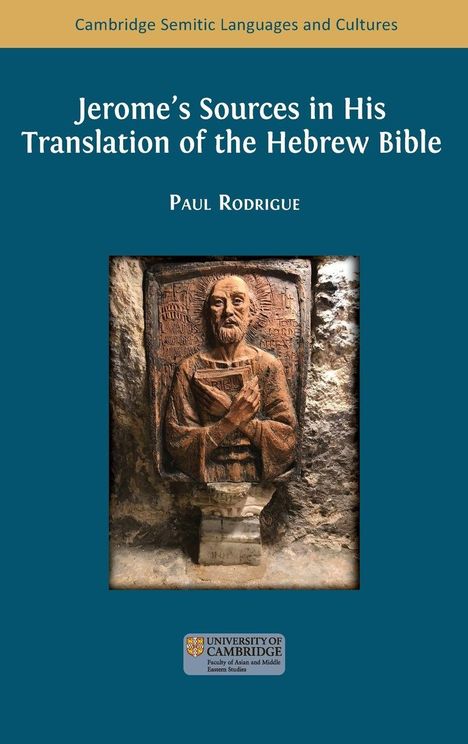Paul Rodrigue: Jerome's Sources in His Translation of the Hebrew Bible, Gebunden
Jerome's Sources in His Translation of the Hebrew Bible
(soweit verfügbar beim Lieferanten)
- Verlag:
- Open Book Publishers, 08/2025
- Einband:
- Gebunden
- Sprache:
- Englisch
- ISBN-13:
- 9781805116387
- Artikelnummer:
- 12423009
- Umfang:
- 374 Seiten
- Gewicht:
- 725 g
- Maße:
- 240 x 161 mm
- Stärke:
- 25 mm
- Erscheinungstermin:
- 20.8.2025
- Hinweis
-
Achtung: Artikel ist nicht in deutscher Sprache!
Weitere Ausgaben von Jerome's Sources in His Translation of the Hebrew Bible |
Preis |
|---|---|
| Buch, Kartoniert / Broschiert, Englisch | EUR 41,30* |
Klappentext
At the close of the fourth century CE, Jerome of Stridon-renowned Latin scholar, theologian, and priest-undertook the monumental task of translating the Hebrew-Aramaic Bible into Latin. The result of this effort, now known as the Vulgate, has long been regarded as a foundational text of Western Christianity. In this volume, Paul Rodrigue investigates the sources that Jerome may have drawn upon in the process of translation. Far from being just a rendering of the Hebrew-Aramaic Bible, the Vulgate emerges as a layered and multifaceted translation, shaped not only by the Hebrew-Aramaic text but also by a broad array of additional sources. Through a series of carefully chosen case studies, Rodrigue analyses a number of verses from the Joseph narrative in Genesis, as well as from Daniel and Esther. Each Vulgate passage is meticulously compared with its equivalents in the Hebrew-Aramaic Bible, the Septuagint, the Latin translations of the Septuagint, the Greek versions of Aquila, Symmachus, and Theodotion, and-where applicable-the Targumim and rabbinic writings. This comparative approach reveals Jerome's engagement with texts in four languages-Hebrew, Aramaic, Greek, and Latin-and highlights his responses to both Jewish and Christian exegetical traditions. Importantly, the selected translations span Jerome's career as a translator of the Hebrew-Aramaic Bible: Daniel at its outset (392-393), Genesis mid-career (late 390s), and Esther at its close (404-405). As such, Rodrigue's analysis offers a chronologically nuanced study of Jerome's evolving translation method (sensus de sensu), providing invaluable insight for scholars of biblical studies, late antiquity, translation theory, and the transmission of sacred texts.


